Types of Lung Cancer
The three types of lung cancer are small cell lung cancer (SCLC), non-small cell lung cancer (NSCLC), and lung carcinoids. All types of lung cancer can be effectively treated if diagnosed early on. Learn about the types of lung cancer and see how you can pursue medical care and financial compensation.
What Are the Types of Lung Cancer?
Non-small cell lung cancer (NSCLC), small cell lung cancer (SCLC), and lung carcinoids account for the three types of lung cancer.
Here’s what you need to know about lung cancer types:
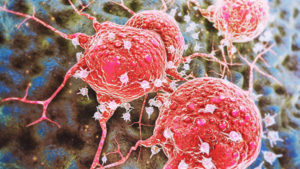
- Non-small cell lung cancer: NSCLC is the most common type, making up more than 8 out of 10 lung cancer diagnoses. It is often easier to treat than SCLC.
- Small cell lung cancer: SCLC accounts for fewer than 2 out of 10 lung cancer cases. This type is very aggressive, but patients can still get treatments to live longer.
- Lung carcinoid tumors: Between 1 and 2 out of 100 lung cancer cases diagnosed each year fall under this type, according to the Cleveland Clinic.
All types of lung cancer have subtypes that can affect a patient’s prognosis (overall health outlook). Further, cancers like mesothelioma are sometimes confused for lung cancer but actually develop differently than lung cancer and require different treatment approaches.
Oncologists (cancer doctors) can determine which type of lung cancer a patient has by taking a biopsy (sample of fluid or tissue) and looking at it under a microscope.
Treating any type of lung cancer can be expensive, but you may be able to pursue compensation for your medical bills. Lung Cancer Group can fight to get you the highest payouts possible.
Get a free case review right now to find out your eligibility.
- Access Financial Aid and Justice
- Learn About Your Options
- Contact Us for Free

Non-Small Cell Lung Cancer (NSCLC)
Non-small cell lung cancer is the most common type of lung cancer, according to the American Cancer Society (ACS). Between 80% and 85% of all lung cancer patients have NSCLC.
NSCLC tumors may first appear in the:
- Alveoli (air sacs where oxygen enters the body and carbon dioxide leaves)
- Bronchi (tubes that bring air from the trachea into the lungs)
- Bronchioles (tiny branches of the bronchi that lead to the alveoli)
NSCLC spreads at a slower rate than SCLC, so many patients have more treatment options available. Surgery, chemotherapy, radiation, and other treatments may be used to help patients with this type of lung cancer live longer.
There are also different subtypes of NSCLC, some of which are easier to treat than others.
Subtypes of NSCLC include:
- Adenocarcinoma: This is the most common subtype of NSCLC, accounting for 40% of all cases. It also spreads the slowest.
- Squamous cell carcinoma: This common subtype makes up 25% to 30% of all cases and forms in the bronchi.
- Adenosquamous carcinoma: This rare subtype occurs when a tumor has elements of both adenocarcinoma and squamous cell carcinoma. It makes up 0.4% to 4% of lung cancer cases.
- Large cell carcinoma: This subtype is also known as large cell lung cancer and accounts for fewer than 3% of cases. Patients are diagnosed with this type if they have NSCLC that can’t be easily classified into one of the other subtypes.
- Sarcomatoid carcinoma: This very rare subtype accounts for 0.1% to 0.4% of cases. It is aggressive, spreads quickly, and responds poorly to treatment.
- Large cell neuroendocrine carcinoma (LCNEC): These tumors have elements of both NSCLC and SCLC. They are aggressive and very rare.
NSCLC patients typically live for 13 months after a diagnosis, according to a study published in Cancer Medicine. Still, some patients can live for decades depending on how their cancer responds to treatment.
Small Cell Lung Cancer (SCLC)
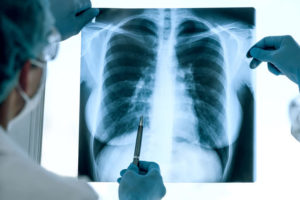

SCLC starts in the lung’s airways and is much more aggressive than NSCLC, according to Yale Medicine.
In fact, 6 out of 10 SCLC patients won’t be diagnosed until after cancer metastasis (spread) has begun, which limits their treatment options.
The Mayo Clinic notes that there are two subtypes of SCLC:
- Small cell carcinoma is when a cancer tumor is made up of just SCLC cells.
- Combined small cell carcinoma is when a patient’s cancer is made up of small cells and cells from an NSCLC subtype (like adenocarcinoma or squamous cell carcinoma).
SCLC patients live for an average of 7 months, according to the results of a 30-year National Cancer Institute Surveillance, Epidemiology, and End Results (SEER) registry study.
Still, treatments like chemotherapy and immunotherapy can help patients live longer and even become survivors.
You may be able to pursue compensation if you were diagnosed with SCLC or any other type of lung cancer. Call (877) 446-5767 now to learn more.
Rare Lung Cancer Types and Lung-Related Cancers
There are several rare types of lung cancer, including lung carcinoid tumors and Pancoast tumors. Some cancers are often discussed alongside types of lung cancer, most notably mesothelioma.
Learn about rare lung cancer types and mesothelioma below.
Lung Carcinoid Tumors
Lung carcinoid tumors form when neuroendocrine cells (which help with air and blood flow in the lungs) become cancerous.
This is the least common type of lung cancer, making up between 1% and 2% of cases diagnosed each year. Lung carcinoids are also known as bronchial carcinoids.
There are two subtypes of lung carcinoid tumors:
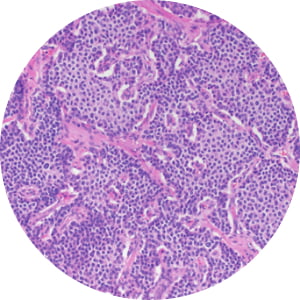

Typical Carcinoids
Roughly 90% of lung carcinoid patients will have this subtype. These tumors don’t grow as quickly as atypical carcinoids.
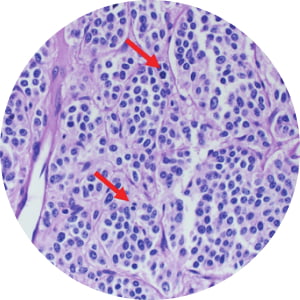

Atypical Carcinoids
Atypical carcinoids are very aggressive and often metastasize, according to the Cleveland Clinic. It’s the rarer of the two subtypes.
Lung carcinoid tumors are also sometimes classified based on where they develop in the body, according to the American Cancer Society (ACS).
lung carcinoid tumors by location include:
- Central carcinoids: These are lung carcinoid tumors that develop in the bronchi. Most lung carcinoids fall under this type, according to the Memorial Sloan Kettering Cancer Center.
- Peripheral carcinoids: These tumors form in the bronchioles rather than the bronchi. Peripheral carcinoids are less common than central carcinoids.
Though it’s the rarest type of lung cancer, it’s the easiest to treat. Lung carcinoid patients live for over 5 and a half years on average, according to a 2021 study published in the medical journal Lung Cancer.
You may qualify for compensation for health care costs if you have bronchial carcinoid tumors or any other type of lung cancer. Take action now with a free case review.
- Access Financial Aid and Justice
- Learn About Your Options
- Contact Us for Free



Pancoast Lung Tumors
Pancoast tumors develop in the top part of the lung, called the apex, causing pain in the ribs, neck, or other nearby areas.
Pancoast lung tumors are mainly found in NSCLC patients but can sometimes develop in cases of SCLC, too. Only 3% to 5% of lung cancer patients will have Pancoast tumors, according to MD Anderson Cancer Center.
Most Pancoast lung cancer tumors are diagnosed only after the cancer has started to spread, but doctors can still recommend treatments to help patients live longer.
Mesothelioma
Mesothelioma is technically not a type of lung cancer. It is a cancer that develops in the lining of major organs after asbestos exposure.
Most cases of mesothelioma affect the lining of the lungs (pleura) and spread into the lungs. For this reason, mesothelioma is sometimes referred to as a type of lung cancer by many major medical facilities like Johns Hopkins.
Mesothelioma is very aggressive, with patients living 12-21 months on average after a diagnosis, but both medical care and financial aid may be available.
We can help mesothelioma patients get treatments and compensation — call (877) 446-5767 to learn more.
What Causes Different Types of Lung Cancer?
There are many potential causes for the different types of lung cancer. There’s no way to know for sure which type of lung cancer (if any) someone will develop after exposure to these toxins.
Common causes of lung cancer include:
- Smoking: Smoking is the main cause of NSCLC and SCLC, according to Yale Medicine. Longtime smokers are at the highest risk.
- Asbestos: Asbestos can cause all types of lung cancer 10 to 50 years after exposure. Asbestos-related lung cancer kills 9,000 to 11,000 people each year.
- Other factors: Secondhand smoke, radon, and other toxins can all lead to various types of lung cancer.
The unfortunate reality is that many cases of lung cancer could have been prevented. For example, major manufacturers knew the dangers of asbestos-containing products in the 1930s but hid the risks for decades.
This has contributed to high rates of asbestos lung cancer — even among smokers, as asbestos and cigarette smoke amplify the damage done to the lungs.
Treatments for Types of Lung Cancer
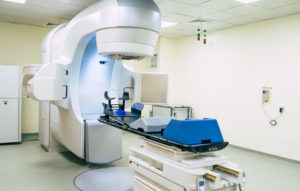

Treatment options vary depending on which type of lung cancer a patient has.
Doctors at top cancer centers will examine the cancer type, stage, and other factors to create a treatment plan that best suits the patient’s needs.
Learn about the different types of lung cancer treatments below.
Types of Non-Small Cell Lung Cancer Treatments
According to the American Society of Clinical Oncology (ASCO), doctors can use several treatments for NSCLC.
NSCLC treatments include:
- Chemotherapy: Chemotherapy is medication that kills cancer, and it is given to the patient in several doses over a certain span of time (cycles).
- Immunotherapy: This treatment improves the body’s immune response so it can better fight lung cancer.
- Radiation therapy: Radiation uses high-powered energy beams to shrink tumors and kill lung cancer cells.
- Surgery: Doctors can remove cancerous tissue, lung cancer tumors, and all or part of a lung from the body with different surgeries.
- Targeted therapy: This is any type of medication that attacks specific elements of lung cancer cells (such as their proteins or genes) to destroy them.
- Clinical trials: These trials test newer treatments that may be more effective. NSCLC patients can ask their doctor if they qualify to join any clinical trials.
The best treatments depend on the patient’s lung cancer stage, overall health, and other factors.
Contact us now for help affording treatments for NSCLC or any other type of lung cancer.
Types of Small Cell Lung Cancer Treatments
Treatment for SCLC depends on the stage of lung cancer a patient has. Common treatment plans include chemotherapy, radiation, and/or immunotherapy.
Surgery is rarely used to treat SCLC, as the cancer is often too advanced to effectively remove it all. That said, if a patient is diagnosed very early on, doctors may consider surgery.
Types of Treatments for Lung Carcinoid Tumors
Doctors try to use minimally invasive surgery for typical carcinoid tumors that haven’t spread beyond the lungs.
If a patient has atypical carcinoids, doctors will often remove the lung closest to the tumors and then treat the surgery site with chemotherapy and/or radiation therapy.
We Can Help Patients With Any Type of Lung Cancer
Lung Cancer Group may be able to help you get compensation for medical bills regardless of which lung cancer type you have.
A financial payout can allow you to afford treatments and other expenses that stem from your diagnosis — which can quickly add up, even with insurance.
With your medical bills covered, you can focus on recovering and spending time with your family.
Here are 3 steps we recommend:
- Call (877) 446-5767 now to find out if you’re eligible for compensation
- Work with skilled lung cancer doctors to get treatments
- Pursue compensation to cover medical bills and other expenses
Get a free case review now to see if you’re eligible for financial compensation for lung cancer or mesothelioma.
Types of Lung Cancer FAQs
Which lung carcinoma has the worst prognosis?
Small cell lung cancer (SCLC) has the poorest prognosis of all types of lung cancer, with patients living just 7 months on average.
This lung cancer type is very aggressive and harder to treat than non-small cell lung cancer (NSCLC) or lung carcinoids.
Still, it is possible to survive SCLC — a doctor can recommend treatments that can help you live longer.
What is the easiest lung cancer to treat?
lung carcinoids are the easiest lung cancer tumors to treat. This type of lung cancer doesn’t grow very fast, allowing doctors to treat patients with surgery, chemotherapy, and radiation more easily.
Nearly 90% of patients with lung carcinoids are still alive 5 years after being diagnosed, according to the American Cancer Society.
Factors like when a patient is diagnosed, their type and subtype, and how far the lung cancer has spread can all impact how easy it will be to treat lung cancer.
Which types of lung cancer are caused by asbestos exposure?
All types of lung cancer can be caused by asbestos exposure. If you breathe in asbestos fibers, they can get stuck in your lungs and harm healthy tissue for decades.
Irritation from asbestos fibers — as well as other toxins like cigarette smoke — can cause lung cancer tumors to form 10-50 years after exposure.
Asbestos can also cause a serious cancer called mesothelioma, which often develops in the lung lining.
Get help if you developed lung cancer or another asbestos-related disease by calling (877) 446-5767 right now.
What is the most common type of lung cancer?
The most common type of lung cancer is NSCLC, which makes up 80% to 85% of all lung cancer cases.
The other types of lung cancer are much less common. SCLC accounts for 10% to 15% of lung cancer cases. Lung carcinoids make up between 1% and 2% of cases.

